Table of Contents
Embarking on a culinary journey through Yemen unveils a captivating tapestry of flavors and cultural heritage. Yemeni cuisine, influenced by Arabian, Indian, East African, and South Asian traditions, offers a delightful fusion of tastes. From beloved traditional dishes to tantalizing street cuisine, Yemeni food is a treasure trove of mouthwatering delights that showcase the richness of its food culture. Let’s delve into this diverse and vibrant world of the food culture of Yemen.
Top Ingredients of Yemeni Cuisine
In Yemeni cuisine, a rich tapestry of flavors is crafted by skillfully combining a range of ingredients. Here is a list of the most commonly used ingredients that form the foundation of Yemeni culinary traditions:

Rice: Rice plays a central role in Yemeni cuisine, often served alongside various dishes. It can be prepared in different styles, such as Mandi (rice cooked with meat and a blend of spices) or Biryani (flavored rice with meat or vegetables).

Lamb: Lamb is the preferred meat in Yemen and serves as a fundamental component in many traditional Yemeni dishes, including Zurbian, Salta, and Fahsa.

Spices: Yemeni cuisine embraces an array of aromatic spices, including cumin, coriander, cardamom, cinnamon, and cloves, which infuse depth and character into their culinary creations.

Yogurt: Yogurt is a crucial element of Yemeni cuisine, used as a condiment (known as Hilbeh), a refreshing drink (Ayran), or as a marinade for meat.

Onions and Garlic: These two ingredients are the building blocks of many Yemeni dishes, lending a robust and savory foundation to the cuisine.
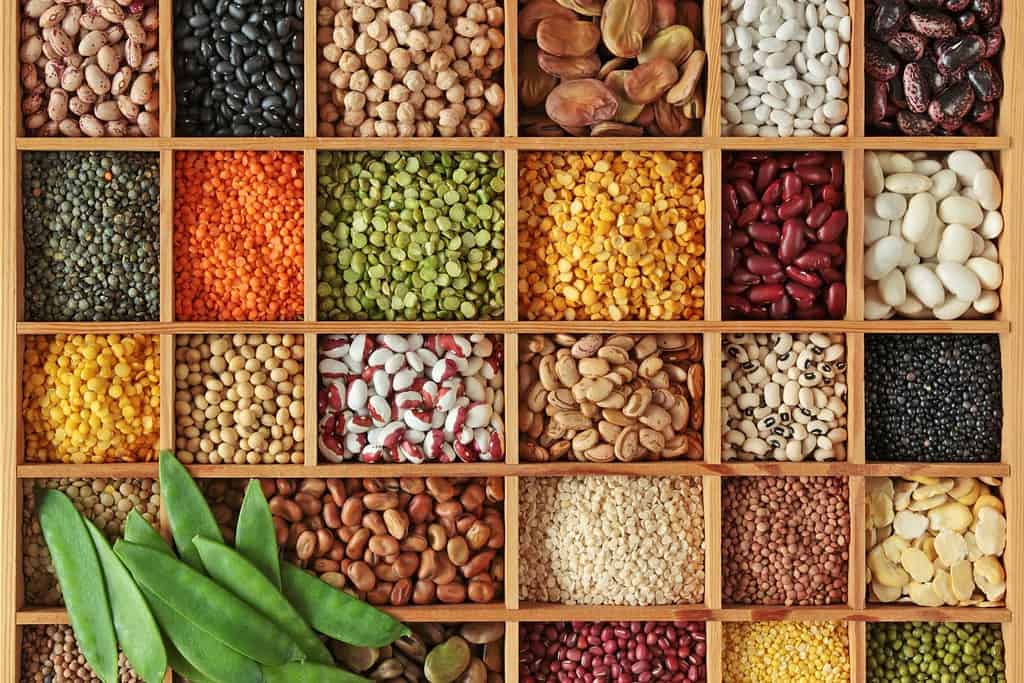
Legumes: Legumes like fava beans and lentils are staples in Yemeni cooking, featured in dishes such as Ful Medames and Adas (lentil soup).

Tomatoes: Tomatoes are frequently employed in Yemeni cuisine to provide acidity and complexity to stews, rice dishes, and sauces.

Fenugreek (Hilbeh): Fenugreek is a unique spice commonly used in Yemeni cuisine, particularly in Hilbeh sauce, which accompanies many Yemeni meals.

Nuts: Almonds, cashews, and peanuts are often utilized in Yemeni dishes, offering both texture and a hint of nutty richness.

Yemeni Bread (Khobz): Bread is an essential component of Yemeni cuisine, and Khobz, a type of flatbread, is a customary choice. It is served with various dishes to scoop up sauces and accompaniments.
These ingredients, along with a diverse assortment of herbs, spices, and locally sourced produce, contribute to the captivating and varied flavors that define Yemeni gastronomy.
The variety of food from Yemeni cuisine
Yemeni cuisine offers a fascinating array of flavors and dishes that reflect the nation’s rich history and cultural diversity. Influenced by Arabian, East African, and Indian culinary traditions, Yemeni food presents a unique fusion of ingredients and culinary techniques. One of the most iconic dishes is Mandi, a fragrant combination of long-grain rice cooked with tender lamb or chicken, aromatic spices, and caramelized onions. This dish is a symbol of Yemeni hospitality and is often served at festive gatherings. Another beloved Yemeni specialty is Saltah, a hearty stew made with meat, vegetables, and a blend of aromatic spices, typically accompanied by flatbread.

The heartiness of Yemeni cuisine shines through in its grilled dishes, such as the mouthwatering Yemeni Kebabs, prepared with a variety of meats like lamb, chicken, or beef, marinated in a delightful blend of spices. The love for stews is evident in Marak, a flavorful concoction of meat, vegetables, and a medley of spices, usually served with rice or bread. For those seeking vegetarian options, Ful Medames is a standout, featuring fava beans cooked with garlic, olive oil, and spices, served with bread. Another popular choice is Bint Al-Sahn, a sweet honey-infused pastry that offers a delightful end to any meal.
Satisfying the sweet tooth, Yemeni cuisine presents delicious desserts like Basbousa, a semolina cake soaked in fragrant sugar syrup and garnished with almonds. The diversity of Yemeni food is further showcased in its regional specialties, with each area offering unique recipes and culinary traditions. Whether savoring the succulent flavors of a Kebab or enjoying the comforting taste of Saltah, exploring the variety of Yemeni cuisine is a journey into cultural richness and culinary delight.
While visiting beautiful Yemen, you can savor all the best recipes from Yemeni cuisine. We offer a wide range of tours in Yemen that you can choose to explore this vibrant country.
Best Foods in Yemen
Yemen’s best foods offer a delightful array of dishes that tantalize the taste buds with their rich flavors and cultural significance. While it’s challenging to single out a definitive list of the “best” foods, some dishes stand out as particularly beloved and iconic in Yemeni cuisine.

Yemeni cuisine is known for its creative use of spices, such as cumin, coriander, cardamom, turmeric, cloves, cinnamon, ginger, garlic, chilies, saffron, black pepper, and dried mint for its rich and flavorful dishes. The result is a harmonious blend of aromatic spices and vibrant herbs that make Yemeni food truly exceptional.
Most famous Yemeni foods
Here are the top most famous foods in Yemen that have garnered recognition both locally and internationally:

Mandi: Considered the national dish of Yemen, Mandi is a culinary masterpiece that features long-grain rice cooked with tender lamb or chicken, fragrant spices, and a flavorful blend of herbs and aromatic spices. This dish exemplifies the perfect balance of savory and aromatic, making it a favorite at weddings, festivals, and family gatherings.
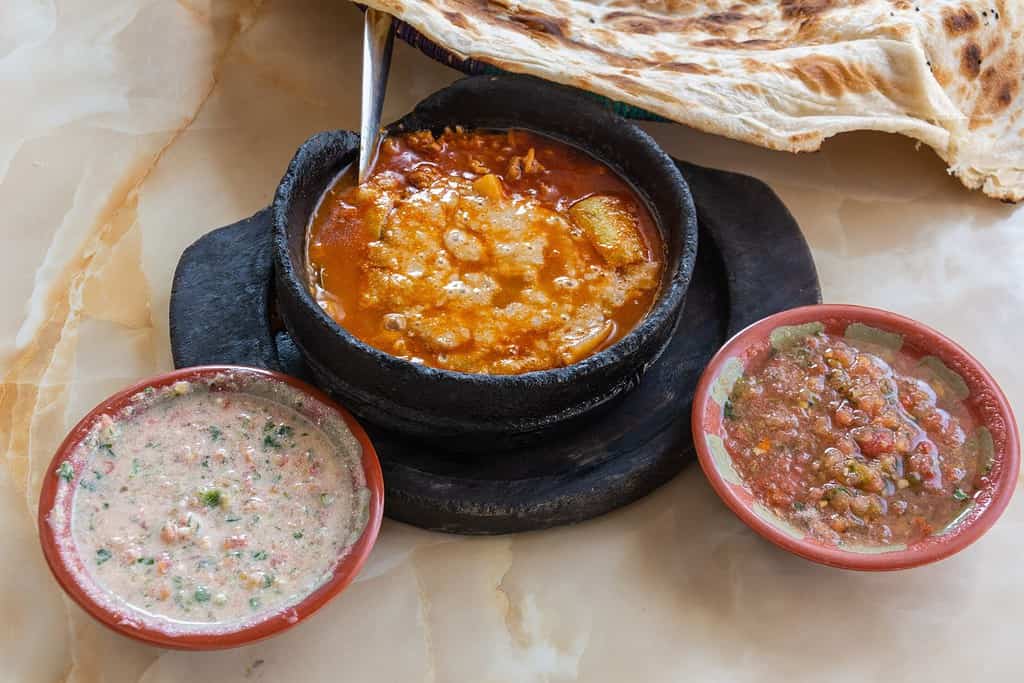
Saltah: A symbol of Yemeni hospitality, Saltah is a hearty stew made with spiced ground meat (often lamb or beef), vegetables, and a tomato-based sauce. It’s traditionally served in a stone pot with a dollop of fenugreek foam on top, creating a harmonious explosion of flavors and textures.

Arabian Kebabs: Yemeni Kebabs are renowned for their succulent taste and smoky aroma. Whether it’s lamb, chicken, or beef, the meat is marinated in a blend of spices and grilled to perfection. Served with flatbread and a spicy chutney, Kebabs are a popular street food and an integral part of Yemeni cuisine.

Zurbian: A staple in Yemeni households, Zurbian is a rich and flavorful rice dish prepared with meat (often lamb or chicken), vegetables, and a medley of aromatic spices. It’s typically enjoyed with flatbread, and the regional variations in recipes add to its allure.

Samboosa: Samboosa is a delectable fried pastry that comes in various fillings, such as minced meat, vegetables, or lentils. Crispy on the outside and flavorful on the inside, Samboosa is enjoyed as a snack or appetizer, often served with a tangy dipping sauce.

Fahsa: These hearty stews are filled with spiced meat and topped with a tomato-based sauce, herbs, and aromatic spices. Fahsa’s distinctive taste and presentation make it a favorite during special occasions and celebrations in Yemen.
These renowned Yemeni dishes showcase the richness and diversity of the country’s culinary heritage, making them popular not only within Yemen but also among food enthusiasts around the world.
Yemeni Desserts
Yemeni desserts provide a sweet and delightful conclusion to a satisfying meal, reflecting the rich and diverse culinary traditions of Yemen. These desserts are an integral part of Yemeni culture and are often enjoyed during various celebrations and special occasions. Here are some popular Yemeni desserts:

Sahlab: Sahlab is a creamy and aromatic dessert made from ground orchid tubers, milk, sugar, and flavored with ingredients like rosewater or orange blossom water. It is often garnished with crushed pistachios, coconut flakes, and cinnamon. Sahlab is cherished during Yemeni gatherings and cold winter evenings.

Basbousa: Basbousa is a sweet semolina cake soaked in a fragrant sugar syrup, making it moist and incredibly sweet. This dessert is enjoyed across Yemen and the Arab world, and it’s often adorned with almond or walnut halves.

Qatayef: Qatayef is a popular dessert during Ramadan and special occasions in Yemen. These delicate stuffed pancakes are filled with a sweet mixture of cheese, nuts, or a combination of both. They are folded into half-moon shapes, deep-fried, and then soaked in a sugary syrup.
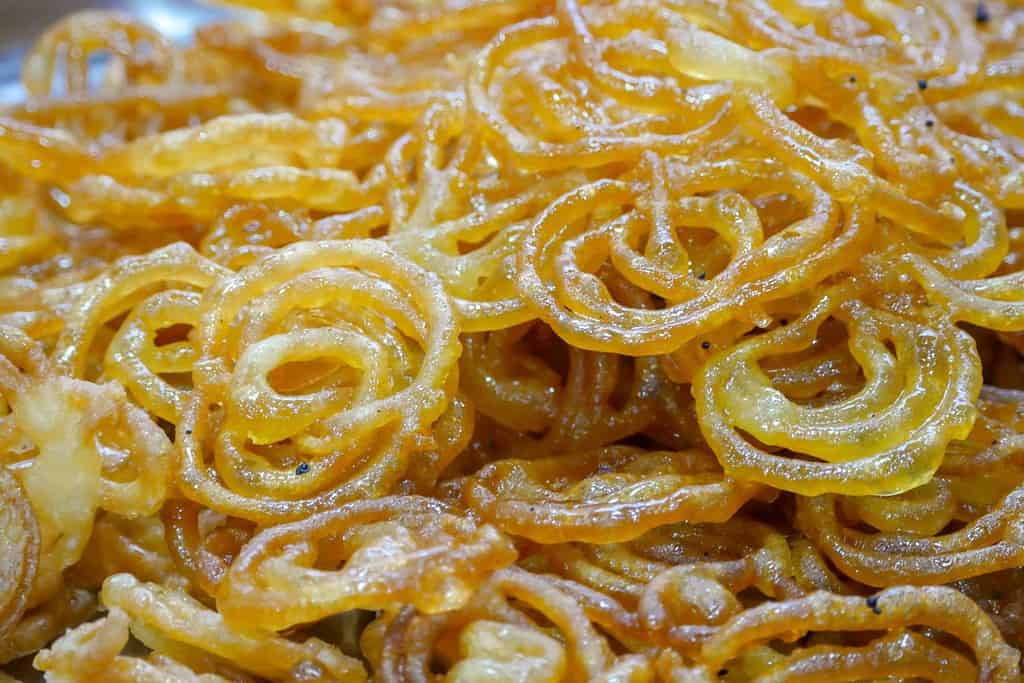
Zalabia: Zalabia is a deep-fried Yemeni dessert made from a simple batter of flour, yeast, and water. The resulting doughnuts are soaked in sugar syrup, giving them a crispy exterior and a sweet, fluffy interior. Zalabia is often enjoyed with a cup of traditional Yemeni coffee.
These Yemeni desserts showcase the rich flavors and culinary heritage of Yemen, offering a delightful way to end a memorable meal or celebrate special moments in Yemeni culture.
The culture behind Yemeni food
The culture behind Yemeni food is deeply rooted in tradition, hospitality, and community. Yemeni cuisine reflects the country’s rich history and diverse cultural influences, blending elements from Arabian, African, Indian, and Middle Eastern culinary traditions. Food holds significant cultural importance in Yemen and plays a central role in social gatherings, family events, and religious celebrations.
Hospitality is a cornerstone of Yemeni culture, and sharing food with guests is a deeply ingrained tradition. When visitors arrive at a Yemeni home, they are warmly welcomed with an array of delicious dishes, reflecting the host’s generosity and desire to make their guests feel at home. Meals are often communal affairs, with everyone seated around a shared plate, emphasizing the importance of togetherness and solidarity in Yemeni culture.
Also, read:
Sanaa, Aden, and Taiz
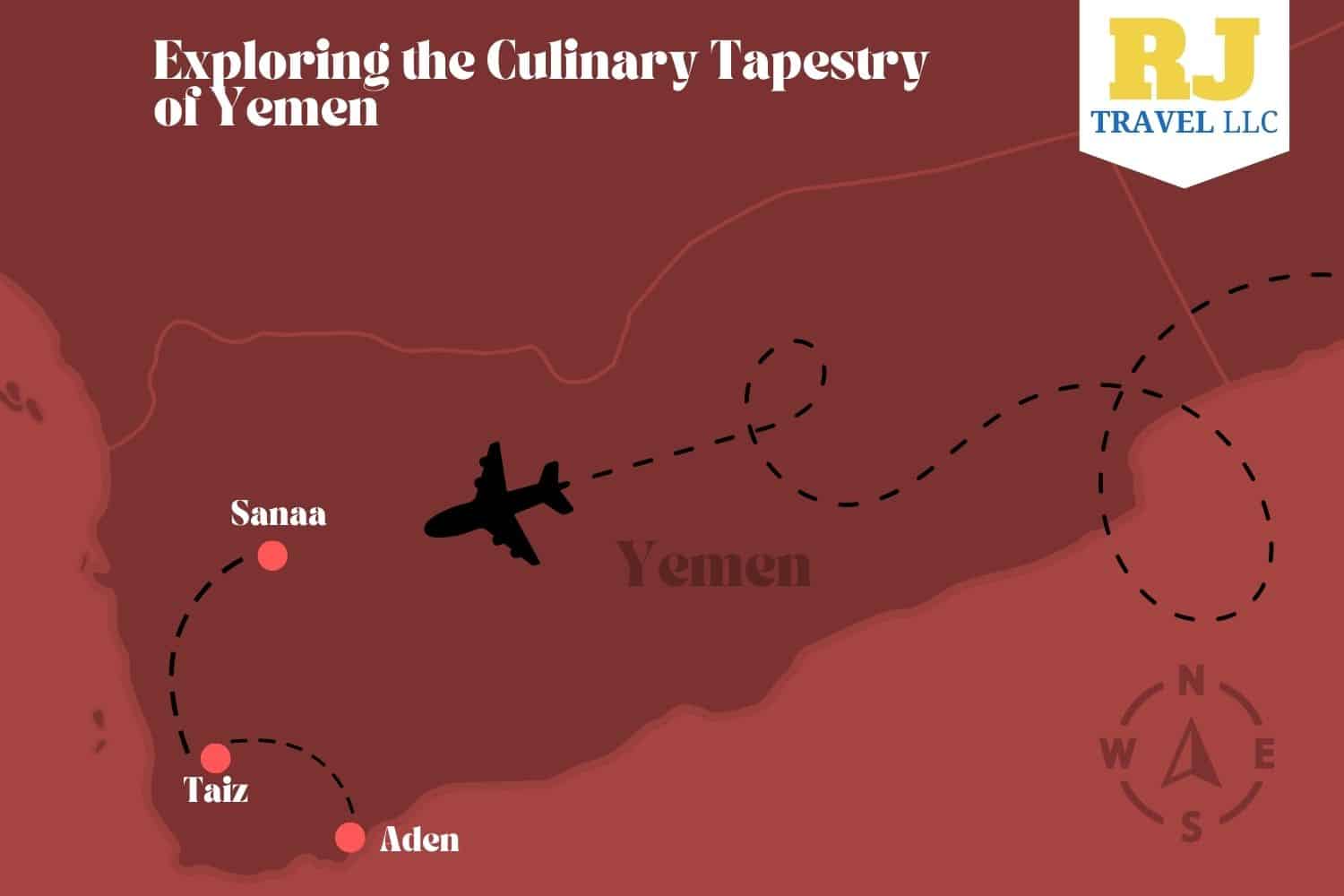
Embark on a gastronomic journey through Sanaa, Aden, and Taiz, and allow the tantalizing flavors, cherished through generations, to whisk you away. Let the traditional dishes of each Yemeni city paint a vivid picture of Yemen’s diverse culinary landscape, inviting you to savor the unique treasures of these remarkable regions.
Within the enchanting realm of Yemeni cuisine, every city boasts its own distinct flavors and culinary heritage. Let us venture into the culinary realms of Sanaa, Aden, and Taiz, and uncover the delightful diversity in their traditional fare.
The variations in dishes from each Yemeni city can be attributed to a combination of factors, including geography, historical influences, and the predominant ethnic groups in each region. Yemen’s diverse terrain, with its mountains, coastlines, and fertile valleys, has shaped the availability of ingredients and farming practices in different areas, thus giving rise to differences in the types of dishes that have evolved.
Sanaa’s Saltah, a savory stew featuring lamb, fenugreek, and vegetables, epitomizes Yemeni hospitality. Aden’s Fish Harees showcases a coastal influence, blending fish, wheat, and spices into a delectable porridge-like dish. Taiz’s Aseed Yemeni, on the other hand, offers a unique taste experience, with a hearty mixture of meat, grains, and vegetables seasoned to perfection.
For instance, in Sanaa, as the capital city and a melting pot of cultures, the culinary scene is more diverse, influenced by a blend of traditions from various regions. Aden, situated on the coast, draws inspiration from its maritime surroundings, resulting in dishes like Fish Harees. In Taiz, the local cuisine is shaped by the cultural traditions of its inhabitants, resulting in a distinct flavor profile in dishes such as Aseed Yemeni.
When comparing the three cities, Sanaa boasts a wide array of dishes influenced by its cosmopolitan nature, Aden emphasizes seafood-centric preparations, and Taiz delights with its unique blend of flavors. Each city proudly showcases its own culinary heritage, adding depth to the intricate and rich tapestry of Yemeni cuisine.
Sanaa

Commencing our culinary expedition in Sanaa, Yemen’s capital city, we encounter a vibrant food scene that mirrors the nation’s rich cultural diversity. The city offers a fusion of traditional Yemeni dishes and international influences. As we navigate through bustling markets and street food vendors, the scent of freshly baked flatbreads and grilled delights fills the air. Sanaa’s gastronomy represents a fusion of flavors, showcasing an extensive range of dishes to cater to every taste.
Famous Food from Sanaa
- Mandi: A flavorful rice dish cooked with tender lamb or chicken, fragrant spices, and saffron, exemplifying Yemeni hospitality.
- Aseed: Savory dough dumplings served with a variety of toppings, such as honey, sesame paste, or cheese.
- Saltah: A hearty stew made with lamb, vegetables, and a blend of aromatic spices, often enjoyed with flatbread.
- Bint Al Sahn: A traditional honey-infused layered pastry, a sweet treat commonly served during special occasions.
- Fahsa: A spicy and robust soup made with beans, meat, and fenugreek, known for its bold flavors.
- Kabsa: A flavorful rice dish prepared with chicken or lamb, flavored with a medley of spices and served with a tomato-based sauce.
Aden

Continuing our journey to Aden, a coastal city known for its distinctive culinary heritage, we immerse ourselves in the flavors of traditional Yemeni cuisine, with a strong emphasis on seafood and aromatic rice dishes. Adeni cuisine showcases a fusion of bold flavors and locally sourced ingredients, creating a unique culinary experience.
Famous Food from Aden
- Fish Harees: A coastal variation of the classic Harees dish, combining fish, wheat, and aromatic spices into a delectable porridge.
- Mandi Lahm: A succulent rice dish prepared with tender lamb, aromatic spices, and saffron, served with a flavorful tomato sauce.
- Samboosa: Fried pastry pockets filled with a savory mixture of meat, vegetables, and spices, a popular street food delight.
- Aseed Adeni: A traditional Adeni dish featuring dough dumplings served with a savory tomato-based sauce and yogurt.
- Fattoush: A refreshing salad made with crispy flatbread, fresh vegetables, herbs, and a tangy dressing.
- Mufarraqah: A delightful dessert made with layers of filo pastry, ghee, and honey, creating a sweet and flaky treat.
Taiz
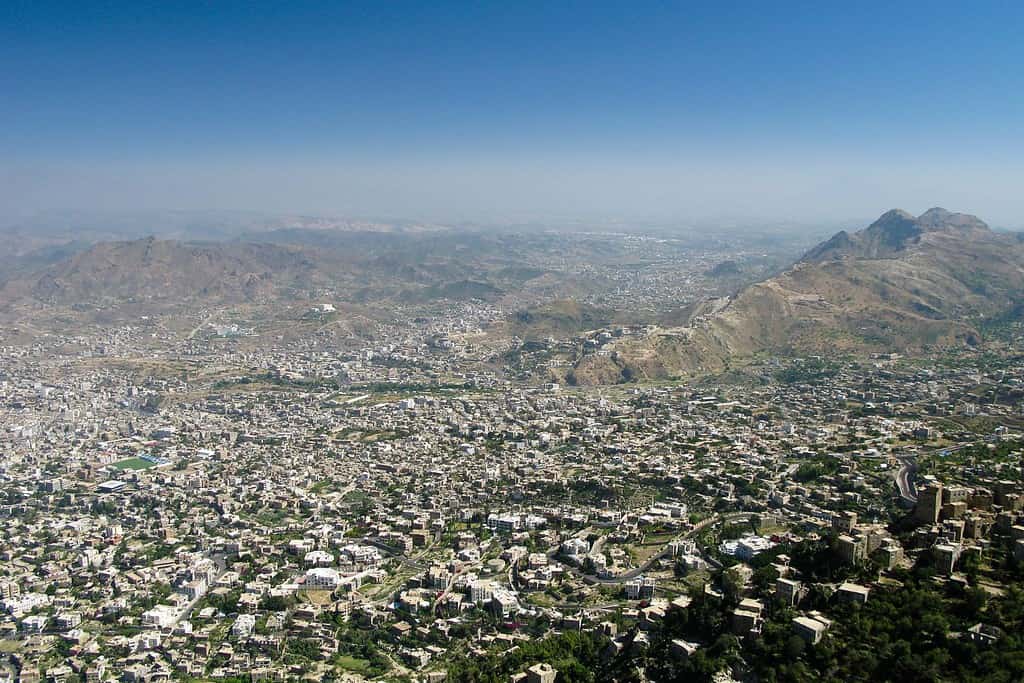
Our culinary expedition culminates in Taiz, a city steeped in history and celebrated for its bold and flavorful dishes. Taizi cuisine is renowned for its use of aromatic spices, resulting in dishes that captivate the taste buds with an explosion of flavors.
Famous Food from Taiz
- Mandi Taizi: A sumptuous rice dish prepared with tender lamb, fragrant spices, and saffron, offering a distinct Taizi flavor.
- Khobz Taizi: A delectable Yemeni flatbread, often served as an accompaniment to various dishes.
- Kabsat Al Juman: A savory meat stew prepared with a rich blend of spices and served with flatbread or rice.
- Atter: A sweet and aromatic Yemeni dessert made from fragrant spices and honey, often enjoyed during festive occasions.
Book Your Trip to Yemen Today!
Embark on an unforgettable journey and explore the allure of Yemen through our exclusive tours.
More About Yemen
[the-post-grid id=”50449″ title=”Yemen Main page”]
